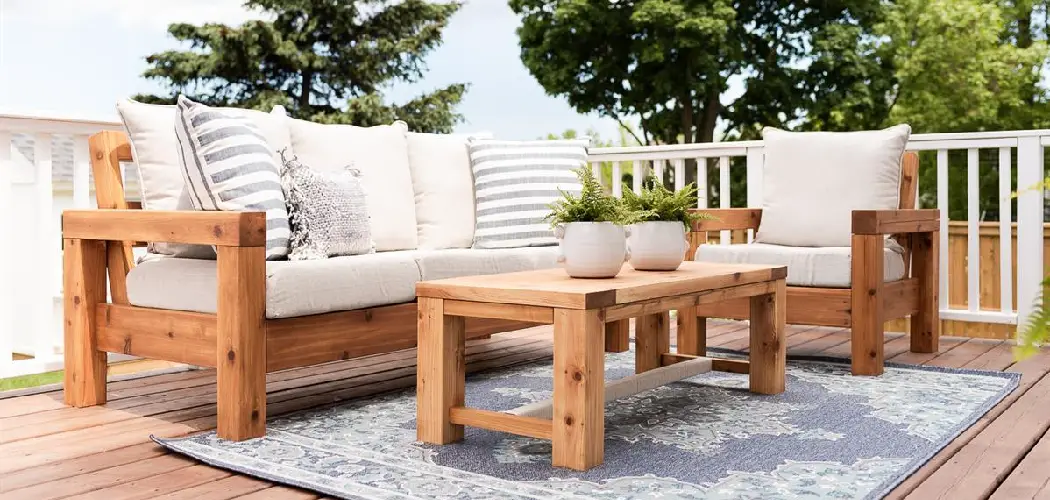Outdoor furniture is a beautiful addition to any patio or garden, but it is important to take proper care of it to ensure it lasts for years to come. One of the best ways to protect wood furniture from the elements is to weatherproof it.
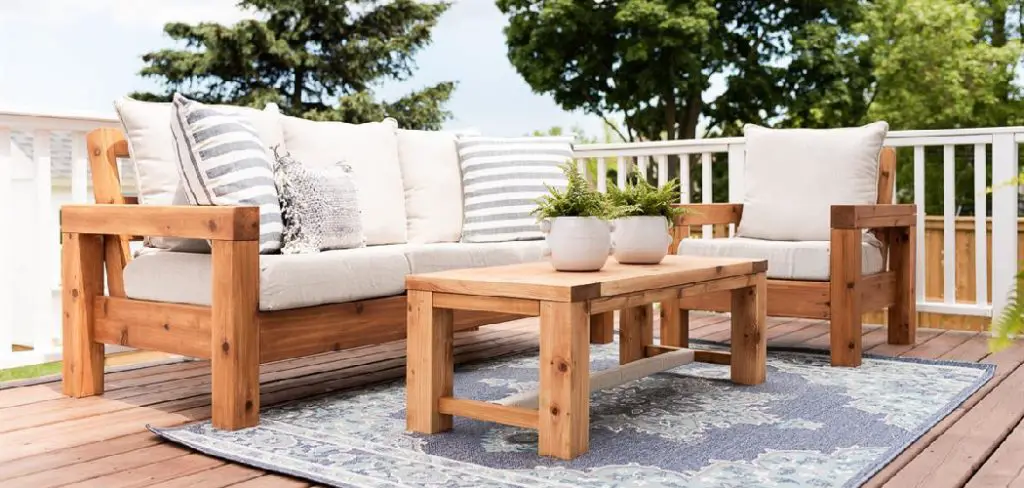
This process will help prevent water damage, mold growth, and rotting, thus extending the lifespan of any wooden furniture you have. In this blog how to weatherproof wood furniture for outdoors, we will discuss 11 easy steps to weatherproof your wood furniture and provide tips on how to keep it looking its best all year round.
Why Do You Need to Weatherproof Wood Furniture?
Wooden furniture is often exposed to the elements such as rain, sun, and wind. This can cause it to become dry and brittle over time, leading to a decrease in its structural integrity. Weatherproofing your outdoor wooden furniture will help protect it from these elements by providing an additional layer of protection. It will also make it easier to clean and maintain the furniture, making it last longer.
Weatherproofing also makes wooden furniture look better by providing a glossy finish that will resist fading and discoloration from long-term exposure to UV rays.
Needed Tools and Materials
Given below is a list of tools and materials you will need to weatherproof your wood furniture:
- Sandpaper
- Vacuum Cleaner or Soft Brush
- Primer Suitable for Outdoor Use
- Outdoor Paint in the Color You Prefer
- Paintbrush and Roller/paint Sprayer (Optional)
- Clear Sealant or Varnish
- Clean Cloth
11 Step-by-step Guidelines on How to Weatherproof Wood Furniture for Outdoors
Step 1: Clean the Furniture
Before weatherproofing your wood furniture, it is important to give it a thorough cleaning. Use a soft-bristled brush and mild soap to scrub away any dirt, dust, or grime. After cleaning, rinse the furniture with a hose and let it dry completely.
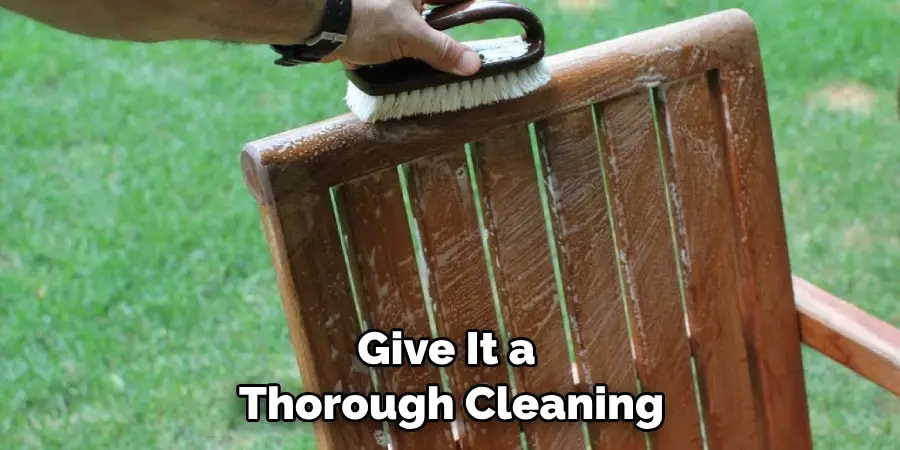
It is important that the wood be completely dry before you start the weatherproofing process. But be aware that if you use a pressure washer, it can cause damage to the wood.
Step 2: Sand the Furniture
Once the furniture is dry, use sandpaper to level any rough spots. Then, use fine-grit sandpaper to smooth the wood surface evenly. This process will ensure that the wood surface is free from any imperfections that might prevent the sealant from adhering properly. It will also give your furniture an even, consistent finish.
You can use a vacuum cleaner to remove any sawdust from the furniture after sanding. It is also important to protect yourself from sawdust by wearing protective eyewear and a dust mask.
Step 3: Choose the Right Sealant
When weatherproofing wood furniture, it is important to choose the right sealant. There are a variety of sealants available in hardware stores and online, but make sure to choose a sealant that is specifically made for outdoor use and is water-resistant.
This will ensure that your furniture is properly protected from the elements. If you choose a sealant that is not suitable for outdoor use, it will not be able to withstand the changing weather conditions and could end up damaging your furniture.
Step 4: Apply the Sealant
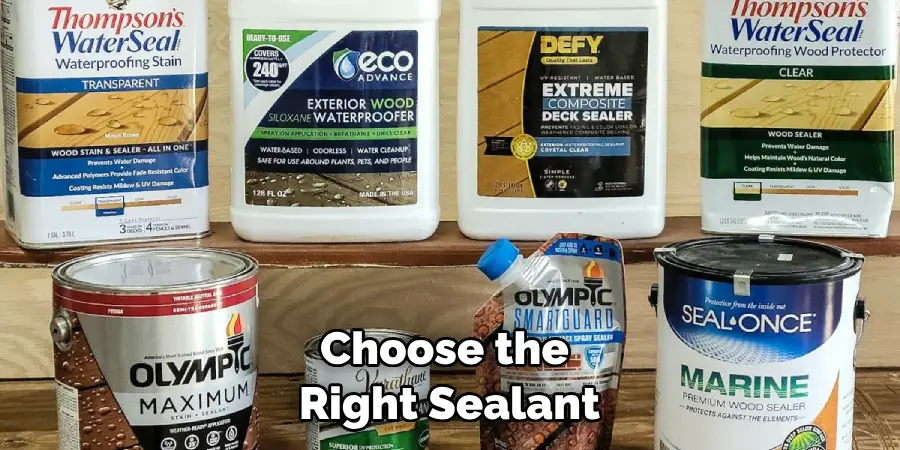
Using a soft-bristled brush, apply the sealant evenly across the entire surface of the furniture. Make sure to coat all the corners and crevices, including the legs and feet. Allow the first coat to dry completely. It is important that you follow the instructions on the sealant can carefully as different products may have varying drying times. This step is key to ensuring that your furniture is properly weatherproofed.
Step 5: Sand the Furniture (Again)
After the first coat has dried, sand the furniture once again using fine-grit sandpaper. This will help to smooth out any rough spots and create a more even surface for the second coat of sealant.
You can also use a vacuum cleaner or soft brush to remove any dust and particles that may have settled on the furniture during the drying time. It is important that the surface of the furniture is clean and free from imperfections before you apply the second coat.
Step 6: Apply the Second Coat of Sealant
Apply the second coat of sealant using the same process as the first coat. Allow it to dry completely. This additional layer of sealant will help further protect your furniture from the elements and ensure that it lasts for many years to come.
It is important to make sure that all the corners and crevices are properly sealed with this second coat. But be sure to avoid applying too much sealant, as this can lead to a sticky or oily finish.
Step 7: Sand the Furniture (One Final Time)
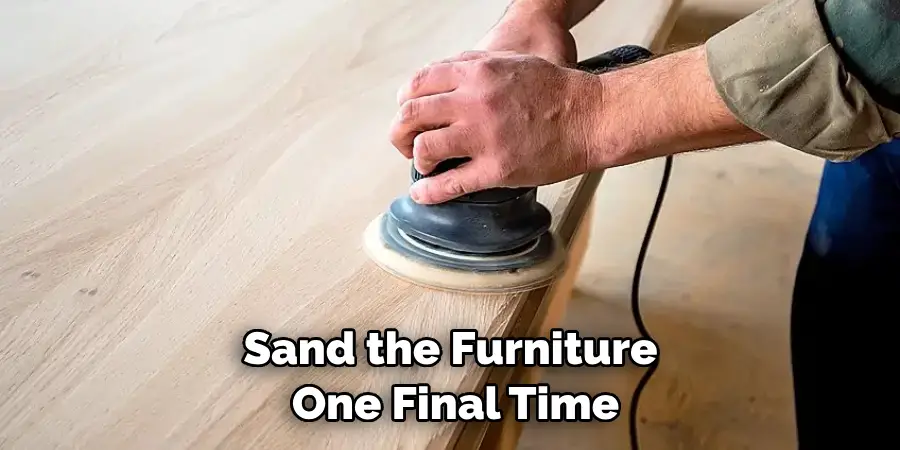
Once the second coat of sealant has dried, sand the furniture one final time using fine-grit sandpaper. This will help to create the smoothest surface possible for the final coat of sealant. It is important to keep sanding until the surface of the furniture is completely smooth and free from any imperfections. This will ensure that the final coat of sealant adheres properly and creates a strong barrier against the elements.
Step 8: Remove Any Dust Particles
Clean the furniture once again, this time using a damp cloth, to remove any dust particles from the sanding process. Allow the furniture to dry completely. You want to ensure that the furniture is clean and free from dust before applying the final coat of sealant.
It is also important to inspect your furniture for any imperfections, cracks, or chips that may have occurred during the weatherproofing process. If you find any such issues, use a wood filler to patch them up before applying the final coat of sealant.
Step 9: Apply the Final Coat of Sealant
Apply the final coat of sealant using a soft-bristled brush. Make sure to coat all the corners and crevices once again, including the legs and feet. Otherwise, the sealant will not be able to protect your furniture properly.
Allow this final coat of sealant to dry completely before moving on to the next step. It is important to follow the instructions on the sealant can carefully as different products may have varying drying times.
Step 10: Let the Sealant Dry Completely
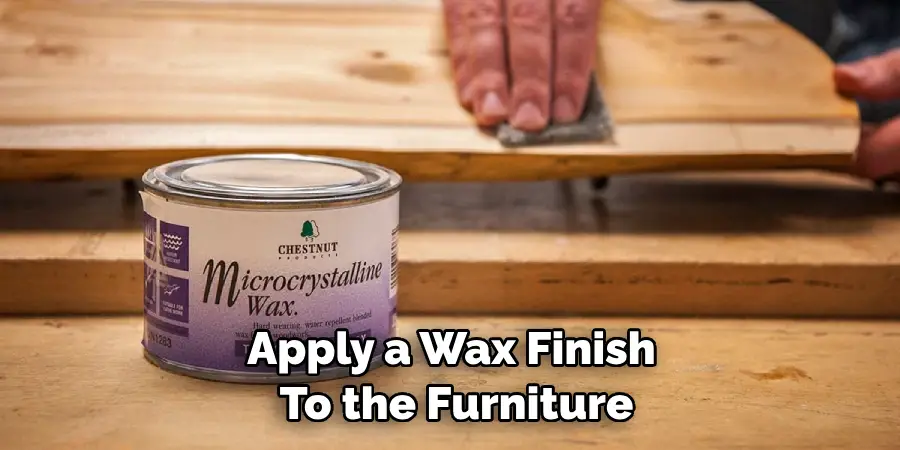
Allow the furniture to dry completely for at least 24 hours. This will ensure that the sealant has cured and will provide the best protection possible. Although the sealant may not seem dry to the touch, it is important to wait until the full drying time has been reached in order for it to properly adhere and provide maximum protection.
It is also important to note that if you plan on painting your furniture, it must be dry before you begin.
Step 11: Apply a Wax Finish
For added protection, apply a wax finish to the furniture, especially if it is exposed to direct sunlight on a regular basis. This will help prevent fading and discoloration. Always read the instructions on the wax can carefully before applying it.
Ensure that the furniture is clean and completely dry before you begin. Apply the wax evenly across all surfaces, including any crevices, using a soft cloth or brush. Allow it to dry for the recommended time before use.
Following these steps on how to weatherproof wood furniture for outdoors will ensure that your wood furniture is properly sealed and protected from the elements. However, it is still important to take extra care of outdoor furniture by regularly cleaning and inspecting for any signs of damage or wear.
Remember to use a gentle cleaner and soft-bristled brush whenever cleaning your furniture, so as not to damage the sealant. Additionally, check on the furniture periodically to make sure the sealant is still intact and has not worn down. By following these tips, you can ensure your wood furniture will look its best for many years to come!

Additional Tips
When it comes to weatherproofing wood furniture for outdoors, there are a few additional tips you should keep in mind. First of all, make sure to use sealants that are specifically designed for outdoor use and labeled as “water-resistant” or “weatherproof.” This will ensure the highest level of protection for your furniture.
Additionally, it is important to apply the sealant in thin coats. Applying too much sealant at once can cause it to become sticky or oily and could damage your furniture. Finally, use a UV-resistant finish if your furniture will be exposed to direct sunlight over long periods of time. This will help prevent fading and discoloration of the wood.
How Much Could It Cost?
The cost of weatherproofing wood furniture for outdoors can vary greatly depending on the size and materials used. Generally, sealant and wax will cost around $20-$30 per quart, while sandpaper and brushes may cost an additional $10-20. Additionally, if you are hiring a professional to do the job, expect to pay between $250–$350 for the entire project.
In the end, weatherproofing your wood furniture will save you money in the long run as it will help extend its life and keep it looking new and beautiful for years to come. The cost of materials is well worth the investment!
Frequently Asked Questions
Q1. Is It Necessary to Sand the Furniture Before Weatherproofing?
A1. Yes, it is important to sand the furniture before weatherproofing in order to create a smooth surface for the sealant to adhere to. This will help ensure that your wood furniture is properly sealed and protected from the elements.
Q2. How Often Should I Re-Weatherproof My Furniture?
A2. Depending on the amount of exposure to the elements, you may need to re-weatherproof your furniture every few years or so. Inspecting it periodically for any signs of damage or wear can help you determine when this might be necessary. Applying a wax finish each season can also help protect the sealant and extend its lifespan.
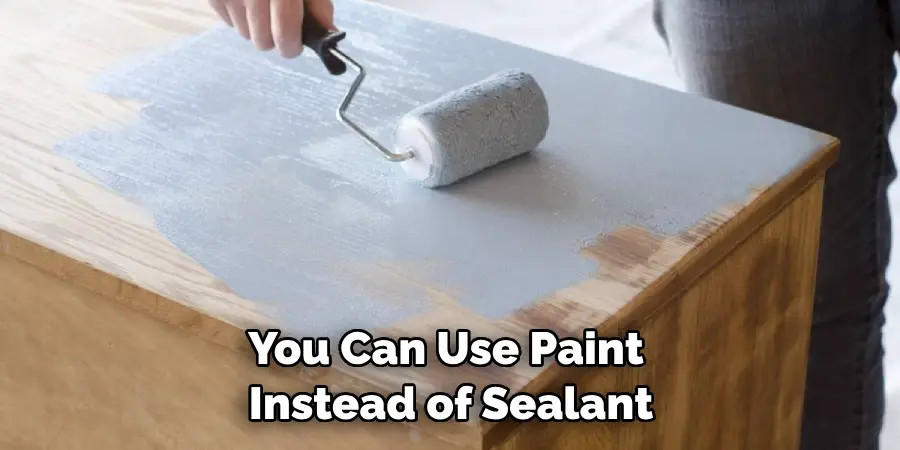
Q3. Can I Use Paint Instead of Sealant?
A3. Yes, you can use paint instead of sealant if desired. However, it is important to choose an outdoor paint that is waterproof and mildew-resistant. Additionally, make sure to apply at least two coats of paint to ensure proper protection from the elements. For added durability, you may choose to apply a clear sealant or varnish after the paint has dried.
Q4. Is There Anything Else I Can Do To Protect My Furniture?
A4. Yes, you can add extra protection to your outdoor furniture by using outdoor furniture covers or umbrellas when appropriate. This will help to keep the furniture out of direct sunlight and protect it from rain and other elements. Additionally, make sure to store the furniture in a dry place when not in use. By taking these extra steps, you can ensure that your furniture stays looking its best for years to come!
Conclusion
In conclusion on how to weatherproof wood furniture for outdoors, weatherproofing wooden furniture for outdoor use is an important step in maintaining and protecting its beauty and durability. The above 11-step guide provides easy-to-follow instructions on how to weatherproof your wooden furniture, and by following these steps, you can ensure that your furniture lasts for many years to come.
Just remember to choose the right sealant, clean the surface thoroughly, and allow enough time for each coat to dry completely. With a little bit of effort, you can have beautiful and durable outdoor furniture that you can enjoy for many years to come.

